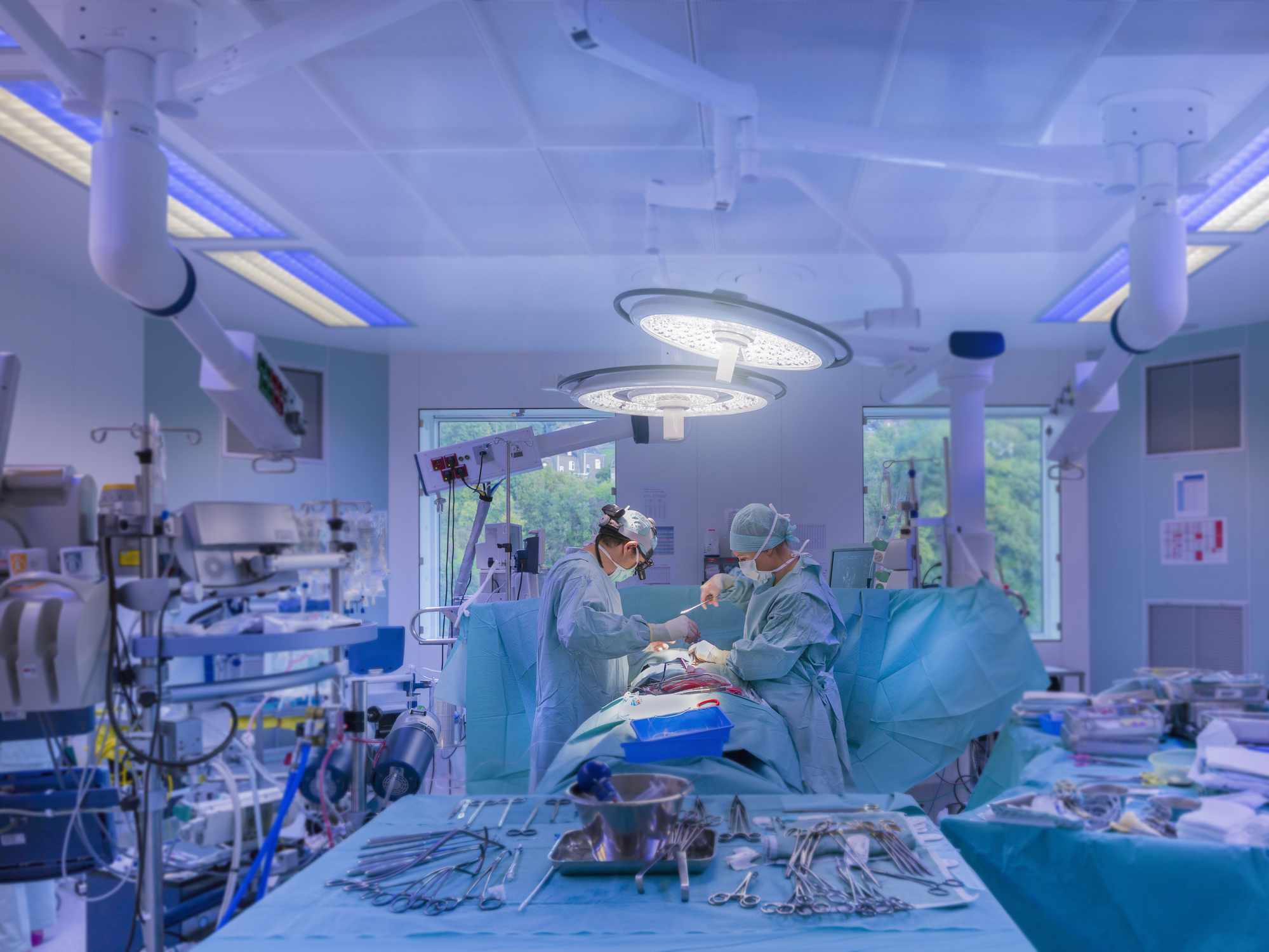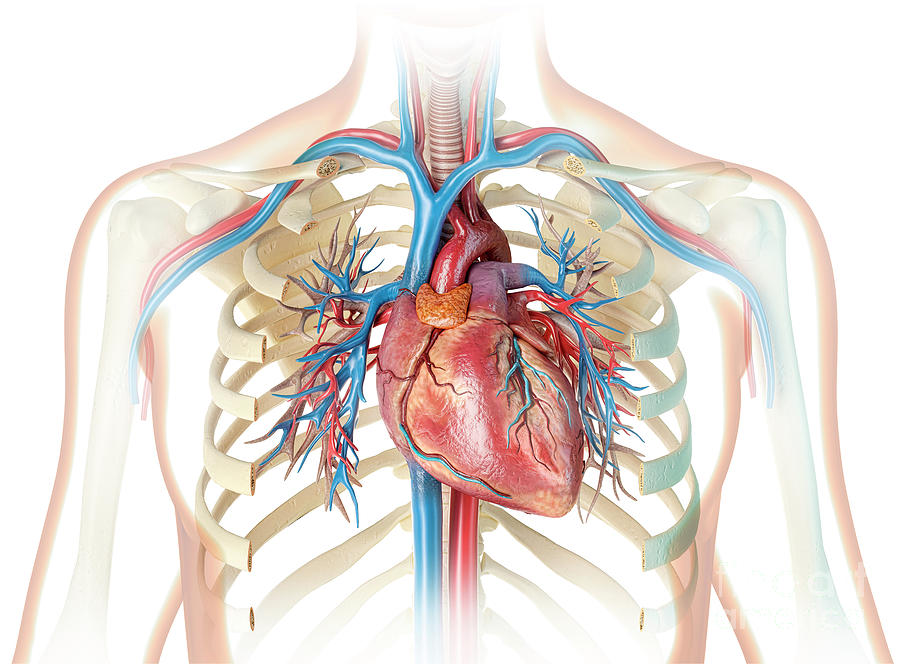Coronary Artery Bypass Surgery
When the arteries to your heart are blocked or damaged, the flow of oxygenated blood is restricted or completely stopped, and your heart can’t work properly. A coronary artery bypass provides a way for surgeons to create a “detour” around the blocked area. The result is restored blood flow and increased quality of life.
Your surgeon may recommend coronary artery bypass surgery for any one of the following reasons:
- to provide relief from angina
- to improve the heart’s pumping ability
- to prevent heart attacks
- to reduce the use of heart medications
In a coronary artery bypass, healthy arteries or veins are “harvested” from other parts of your body, most often the mammary artery in your chest, the radial artery in your forearm, or the saphenous vein in your leg.
The surgeon then uses these healthy veins or arteries to create “bypass grafts” to conduct critical blood flow around the blocked portions of the coronary arteries.

Heart Valve Surgery
The heart has four valves, which let blood exit or enter a chamber of the heart, and then close to keep blood from flowing backward. When a valve becomes diseased and malfunctions, heart valve surgery may be needed to repair or replace the faulty valves.
The most commonly replace valves are the aortic valve and the mitral valve The replacement of the other two valves, pulmonary and tricuspid, is fairly uncommon in adults.
Some of the conditions that require heart valve surgery include
- Stenosis (narrowed or blocked)
- Regurgitation (leaking)
Sometimes, a malfunctioning valve can be repaired. Your surgeon can cut and separate the areas of the valve that have hardened to help them open wider. Parts of an insufficient valve may also be strengthened and shortened to help the valve close more tightly.
If the valve can’t be repaired, it can be replaced with a mechanical valve, created from man-made materials, or biological (tissue) replacement valve, taken from a pig, cow, or human donor.
What is traditional heart surgery?
Traditional heart surgery is done under general anesthesia. The surgeon makes an incision about 8-10 inches long through the patient’s chest, through the breastbone. The rib cage is opened so the surgeon can access the heart.
During the surgery, you’ll be placed on a ventilator through a breathing tube down your throat. Your vital signs, such as your heart rate, breathing rate, and blood pressure, are constantly monitored. You’re also given medicine to thin your blood to decrease the chances of clotting.
Traditional heart surgery is commonly used for those patients who need complicated heart surgeries. Your doctor may recommend it if you are undergoing a multiple coronary artery bypass, or other complex aorta procedures.

Specific Surgeries: Traditional Bypass
With a traditional bypass, the surgeon uses a heart-lung bypass machine to take over the heart’s functions, to mechanically pump oxygen and nutrients to your body during surgery. This allows the surgeon to temporarily stop your heart so the bypass can be performed on a motionless heart. The heart-lung bypass machine, or “pump,” takes over your heart’s pumping while the surgeon is operating, until your heart can resume its pumping function.
Specific Surgeries: Beating Heart Bypass
A beating heart bypass surgery is performed while your heart is still beating, unlike a traditional bypass. A beating heart bypass is also called an “off-pump” bypass because the surgeon does not use a heart-lung machine, or “pump,” to stop the heart before operating.
With a beating-heart bypass, surgeons can perform multiple bypass grafts on all areas of the heart, including the backside (posterior), at the same time. In other words, the surgeon can perform a triple (three bypass grafts), quadruple (four bypass grafts) or more through a middle of the chest incision, all off-pump.
Specific Surgeries: Thoracotomy
A thoracotomy is a surgical procedure performed to open the chest cavity. A surgeon makes an incision in the chest wall on your side, between your ribs, to access on your lungs. Through this incision, the surgeon can remove part or all of a lung. Thoracotomy is often done to treat lung cancer when the tumor can’t be removed safely through a minimally invasive procedure.
A thoracotomy might also be performed to treat problems with your heart or other structures in your chest, such as your diaphragm, or to diagnose disease through a biopsy of tissue.
What Is Minimally Invasive Heart Surgery?
Minimally invasive heart surgery is a technique that allows surgeons to operate on the heart through a smaller chest incision. Traditional open-heart surgery requires a 10-12 inch incision in the sternum, while minimally invasive surgery uses a much smaller incision of about 3-4 inches. As a result, there are typically fewer complications and a shorter recovery time.
Because the incision is smaller, minimally invasive heart surgery results in less trauma and lower blood loss. While your experience depends on your specific situation, here are some of the benefits of minimally invasive heart surgery:
- Lower risk of infection
- Fewer medications
- Reduced scarring
- Less pain
- Faster recovery and shorter hospital stay
- Reduced need for blood transfusion due to blood loss
Your physicians can perform the following procedures using a minimally invasive approach:
- Aortic valve replacement
- Atrial septal defects
- Ascending aortic aneurysm repair
- Mitral valve repair/replacement
- Tricuspid valve repair/replacement
- Patent foramen ovale

Robotic Surgery
Using robotics during cardiothoracic surgery can, in some cases, allow the surgeon to get better, more precise results, or to perform surgeries through smaller incisions than traditional techniques.
Robotic thymectomy. Use of surgical robotics to remove tumors in the chest. This technique allows tumor removal via a smaller incision than a traditional thymectomy.
Minimally invasive single vessel bypass. The surgical robot is used to harvest the donor vessel to perform bypass of the left anterior descending blood vessel.
Thymoma
The thymus gland plays an important role in the development of the immune system development while a fetus. As people age, it becomes a fatty like tissue.
The thymus has the potential to develop tumors (e.g. thymoma) that are best treated with surgical removal of the entire thymus. Myasthenia Gravis is a disorder that can be improved with removal of the thymus, even if a tumor is not present.
